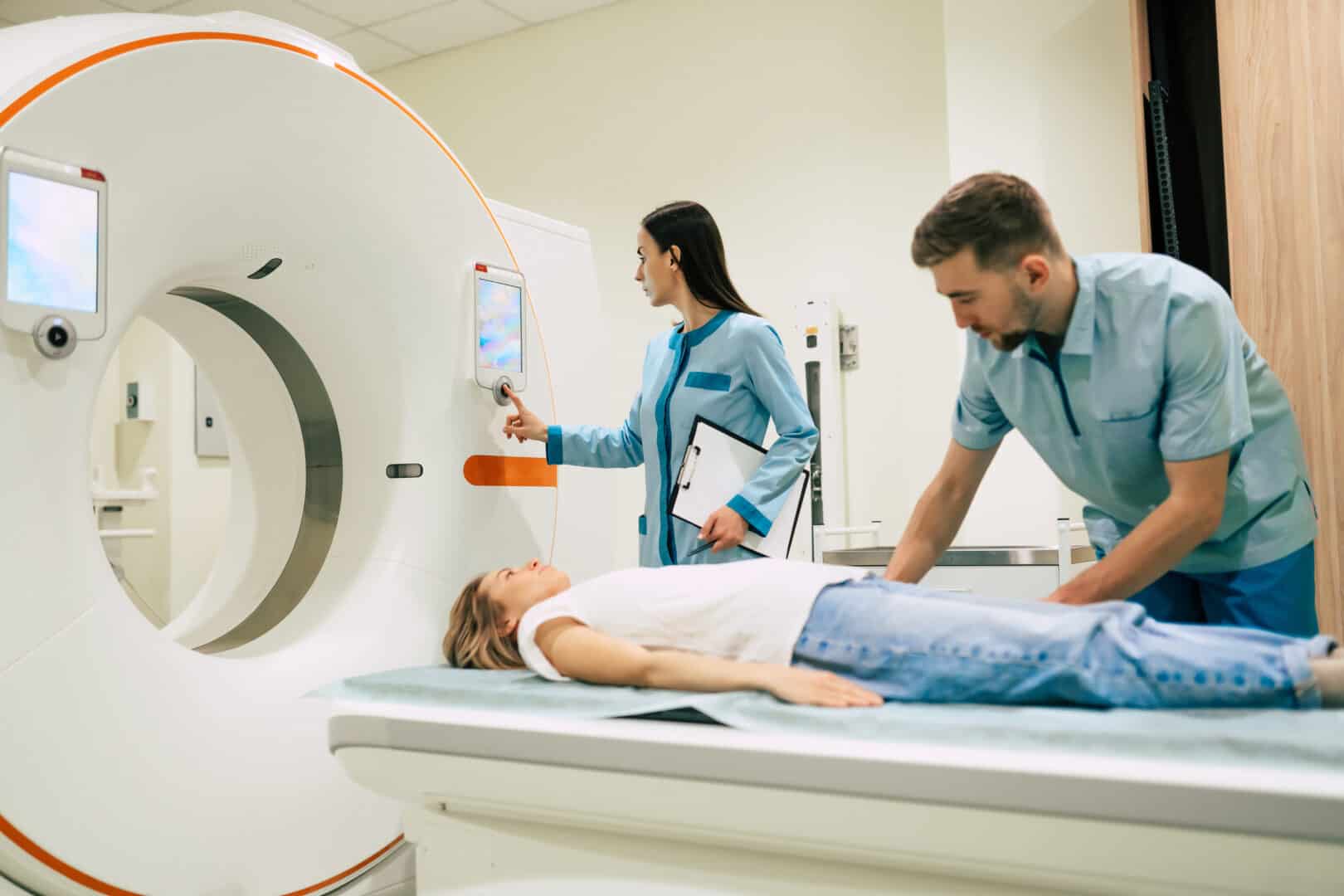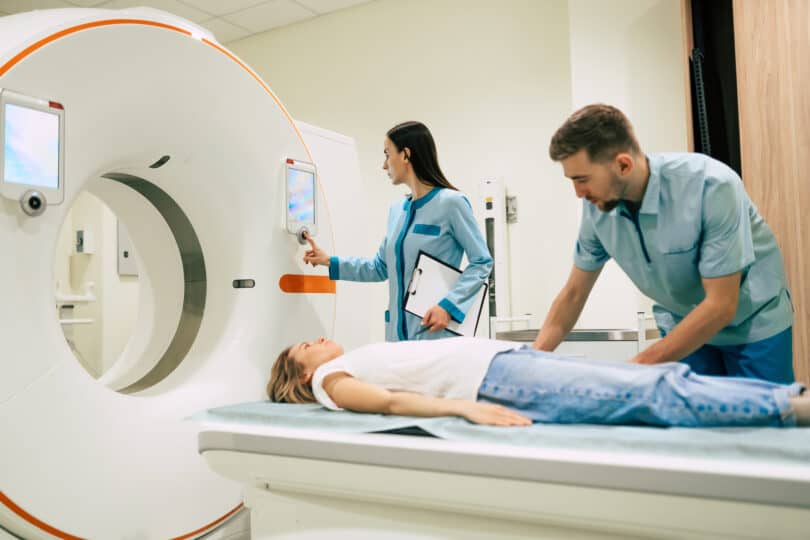
Magnetic resonance imaging has several points that need attention, with regard to the safety of operators, patients and companions during the examination.
Due to the very strong magnetic field, patients or companions who have some metallic or electronic devices, such as non-compatible pacemakers, old brain aneurysm clips, external orthopedic fixators, cannot perform the exam.
It is important to point out that all patients who will be submitted to magnetic resonance imaging must, obligatorily, respond to a specially prepared questionnaire, with questions about the presence of fixed and/or mobile metallic material in the body, such as prostheses, pacemakers, piercings, etc. Based on this screening, the patient is instructed regarding the removal of non-compatible metallic materials and the reason for prohibiting their possession or use, due to the strength of the magnetic field.
Companions must also, obligatorily, respond to the same questionnaires as the services, follow the guidelines of employees and respect the entire safety protocol. This includes sector signs, safety notices, and a ban on non-compliant material in the exam room.
It is necessary to pay attention to the portability of the equipment. The units have lockers for personal objects to be kept during the stay and the exam. Upon arriving at the unit, contact and ask the reception.
Tattoos, rich in iron components, also deserve attention, as they can generate artifacts that nullify the magnetic signal, impairing the regional analysis. In addition, some components of tinctures can absorb the heat generated in the exam, ultimately leading to the appearance of local burns.
Magnetic resonance imaging is very safe, as long as proper care is taken prior to its performance.
Count on CBR!




